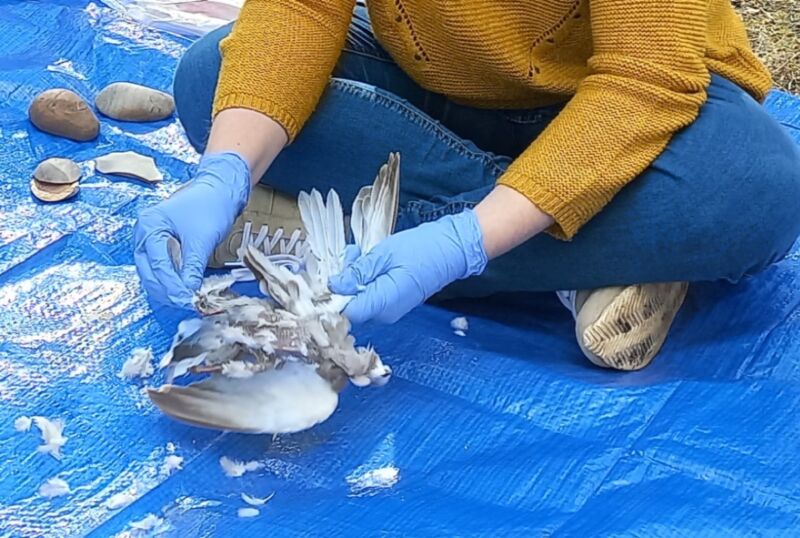Want to cook like a Neanderthal? Archaeologists are learning the secrets
Ars Technica » Scientific Method 2024-07-24

Enlarge / A scientist defeathers one of the birds used in hands-on experiments to replicate Neanderthal butchering and cooking methods. (credit: Mariana Nabais)
Archaeologists seeking to learn more about how Neanderthals prepared and cooked their food conducted a series of hands-on experiments with small fowl using flint flakes for butchering. They found that the flint flakes were surprisingly effective for butchering the birds, according to their new paper published in the journal Frontiers in Environmental Archaeology. They also concluded that roasting the birds damages the bones to such an extent that it's unlikely they would be preserved in the archaeological record.
According to the authors, Neanderthals were able to thrive for over 200,000 years across a broad range of geographical regions so naturally archaeologists are interested in how they sustained themselves. There has been research into their killing and hunting of large game. Neanderthals were expert hunters known to kill bears and other carnivores. A pair of lion fibula from the Middle Paleolithic found in eastern Iberia with cut marks indicates the lion was butchered, while other lion bones found in Southwestern France from the same period had cut marks indicative of skinning.
And as we reported just last year, researchers found evidence of what might be the earliest example of lion hunting yet known, based on on a close forensic analysis of a cave lion skeleton showing evidence of injury by a wooden spear some 48,000 years ago.